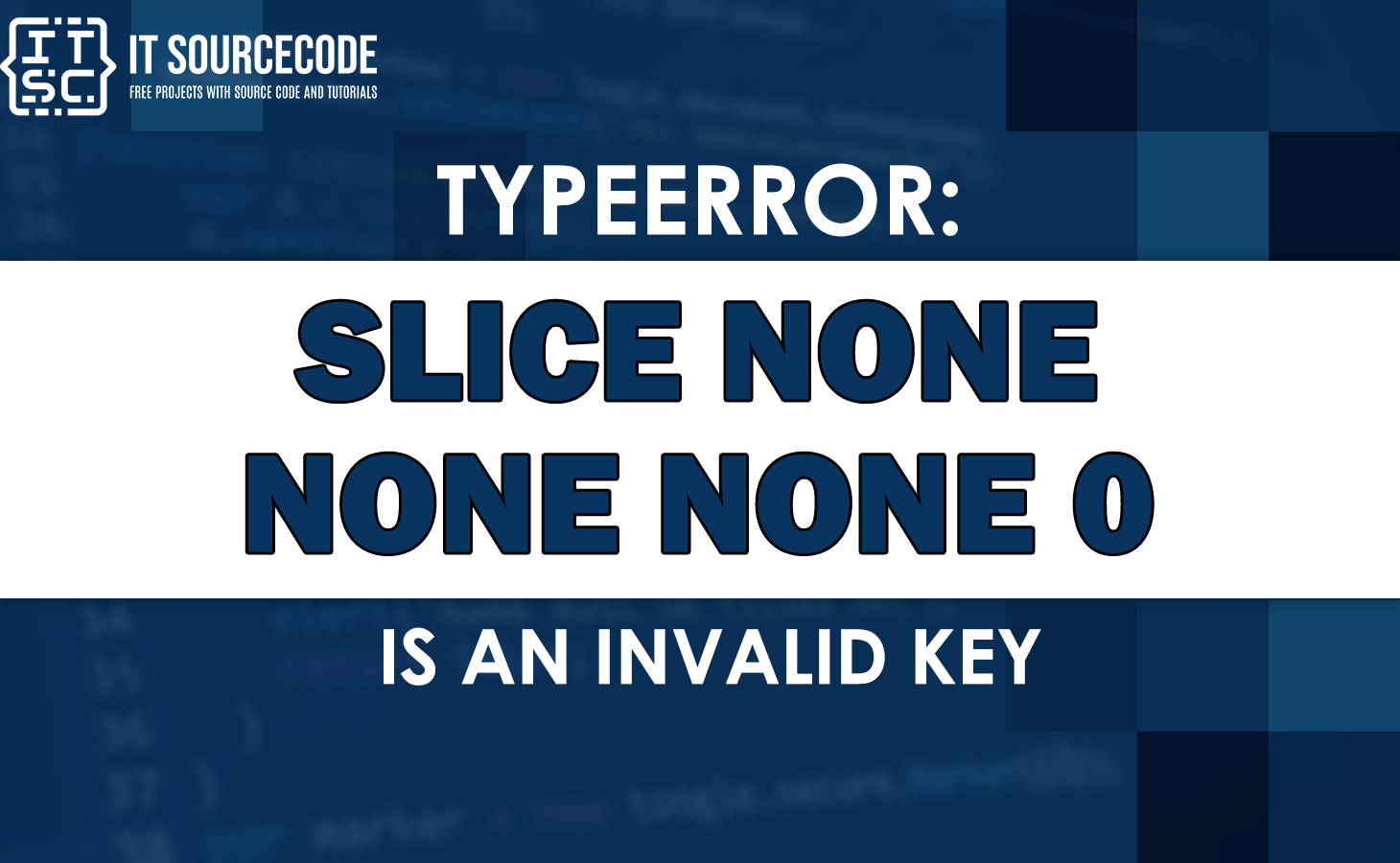Are you having a hard time fixing the “typeerror slice none none none 0 is an invalid key” error message?
In this article, we are going to explore what this error means and why it occurs in your Python code.
Aside from that, we’ll show you how to troubleshoot this error message immediately.
So that you’ll get rid of the error and continue working with your code without any interruptions.
What is “typeerror slice none none none 0 is an invalid key”?
The “typeerror: ‘(slice(None, None, None), 0)’ is an invalid key” error message in Python usually occurs when you are trying to access an element of a slice in a sequence or array using an invalid slice object.
In addition to that, this error occurs in Python when you try to slice a list using a tuple of None values, which is not valid in Python.
In other words, the slice object’s start, stop, or step values are incorrect, leading to the error message.
What are the root causes of “typeerror slice none none none 0 is an invalid key”?
The error occurs because of several root causes, including the following:
- Incorrect usage of slice objects
- Empty lists
- Incorrect data types
- Out-of-range indices
- Syntax errors
How to fix “typeerror slice none none none 0 is an invalid key”
The following are the different solutions you can use to fix the error.
1. Use a slice object with explicit start and end indices
You’ll see in this solution that a slice object is created with a start index of 0 and an end index of 5.
The slice object includes the first two elements of the list.
For example:
sample_list = [1, 2, 3, 4, 5]
sample_slice = slice(0, 5)
print(sample_list[sample_slice])Output:
[1, 2, 3, 4, 5]2. Use different method to slice your list
You can try using a different method to slice your list, such as the “islice” function from the “itertools” module.
For example:
from itertools import islice
sample_list = [1, 2, 3, 4, 5]
sliced_list = list(islice(sample_list, 0, 5))
print(sliced_list)Output:
[1, 2, 3, 4, 5]3. Verify if you’re using the correct syntax for slicing a list
It is necessary to verify if you’re using the correct syntax for slicing a list to avoid errors.
sample_list = [1, 2, 3, 4, 5]
sliced_list = sample_list[0:5]
print(sliced_list)Output:
[1, 2, 3, 4, 5]4. Using a try-except block to catch the error
The try-except block is used to catch the “typeerror: slice(none, none, none), 0 is an invalid key” error message. If an error occurs, an appropriate error message is printed instead.
my_list = [1,2,3,4,5]
try:
print(my_list[0:2])
except TypeError:
print("Invalid slice object")Output:
1, 2, 3, 4, 5]5. Use valid index value
You have to make sure that the index value you’re using is valid.
sample_list = [1, 2, 3, 4, 5]
slice_object = slice(0, 3)
sliced_list = sample_list[slice_object]
print(sliced_list)Output:
[1, 2, 3, 4, 5]Frequently Asked Questions (FAQs)
To fix this error, you need to check the index value, ensure the syntax of the slice object is correct, and ensure the slice arguments are in the correct order.
To avoid this error, double-check your slice objects and ensure that all index values are valid for the data type you are working with.
Conclusion
By executing the different solutions that this article has already given, you can definitely resolve the “typeerror slice none none none 0 is an invalid key” error message in Python.
We are hoping that this article provides you with sufficient solutions.
You could also check out other “typeerror” articles that may help you in the future if you encounter them.
- Typeerror: cannot read property ‘getrange’ of null
- Typeerror fsevents is not a constructor
- Typeerror: bad operand type for unary -: ‘list’
Thank you very much for reading to the end of this article.

